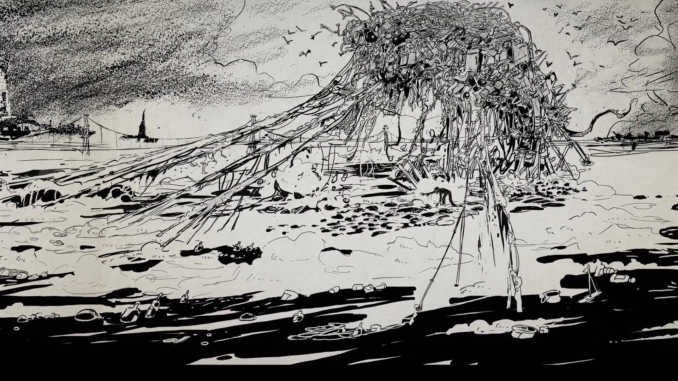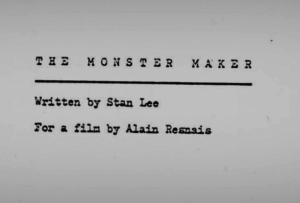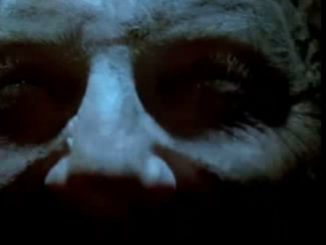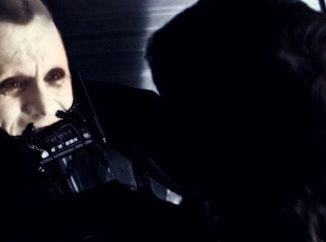
Initially, the idea of a lauded French New Wave auteur teaming up with a Marvel comics personality seems absurd, but from its early days in the 1950s, the cinematic movement had an obsession with American pop-culture – including its directors celebrating Alfred Hitchcock films in Cahiers du Cinéma, Jean Paul Belmondo imitating Humphrey Bogart in Jean-Luc Goddard’s Breathless. Alain Resnais, who became famous for Hiroshima mon amour (1959), Last Year at Mareinbad (1961) and Je t’aime, je t’aime, loved Marvel comics so much that he wrote a fan letter to Stan Lee. They became pen pals, and eventually Resnais travelled to America to meet Lee and stay at his house on Long Island. The friendship between the two creators led to them collaborating on a pair of unrealized film projects.
One of them, titled The Inmates, was described by Lee – in the 1970s, in the Marvel fan magazine FOOM – as a philosophical sci-fi meditation about humanity’s place in the universe. “It’s not a far-out science-fiction thing,” he noted. Lee wrote a treatment for the film but it never went past that stage.
The other project, however, did become a screenplay. Titled The Monster Maker, it was a socially-conscious creature feature.
In video interview recently posted at criterion.com, Lee delves into the project, recalling that the story revolved around a B-movie maker named Larry Morgan, who’s in love with a woman named Catherine Reynolds, but she has her sights set on a respected British auteur filmmaker named Peter Hastings; meanwhile Larry doesn’t notice that his writer, Patricia Hill, is in love with him.
 “I started out by basing it on a fellow named Roger Corman, who had done many inexpensive movies that did very well st the box office,” says Lee. “They weren’t intellectual movies; they were low budget, very interesting, and he did well with ’em.”
“I started out by basing it on a fellow named Roger Corman, who had done many inexpensive movies that did very well st the box office,” says Lee. “They weren’t intellectual movies; they were low budget, very interesting, and he did well with ’em.”
The very Marvel-like scenario, which Lee wrote in three weeks, takes place as a giant trash creature starts terrorizing Manhattan. Resnais had gone so far as to scout a filming location in the area that would serve at the monster’s birthplace – a “filthy and overgrown” island in the East River called Rat Island.
Lee recalls, “We were going to show that all the pollution at Rat Island comes together and becomes like a monster, so all of a sudden it’s like one of the monsters that our hero had been producing for years. But this time the monster is created by pollution, and our hero had to find a way to combat it.”
Resnais was able to attract interest from a producer who paid $25,000 for the rights. However, in order for the film to get made, the script had to undergo significant changes for budget reasons. (“The thing would have cost a billion dollars to produce,” jokes Lee in the interview.) Renais wasn’t willing to compromise on the vision for the film, so it died, and with it a possible new career for Lee.
But perhaps it was all a means to a different end for Resnais anyhow. Lee remembers, “What he really wanted was to direct a movie about Spider-Man!”
-Dave Alexander



